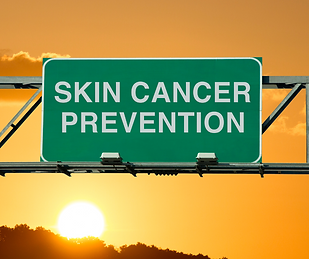
News and Research
All the information you need to know about skin cancer, including history, research and news about skin cancer cases.
While melanoma is typically considered the most severe form of skin cancer and is commonly associated with adults, it can also manifest in children. Despite being a small proportion, pediatric melanoma accounts for approximately 1 percent of new melanoma cases annually. Nevertheless, it is the most prevalent type of skin cancer among children and teenagers, though it remains relatively uncommon. From the 1970s to 2009, there has been a gradual annual increase of about 2 percent in pediatric melanoma cases, primarily observed in teenagers.


Amelanotic melanoma, a type of skin cancer, is characterized by a lack of melanin production in the cells. It can present with colors such as pink, red, purple, or even resemble normal skin color, making it challenging to identify. The tumor typically exhibits an asymmetrical shape and an irregular border with faint pigmentation. Due to its unusual appearance, diagnosis is often delayed, resulting in a poor prognosis and a high likelihood of recurrence.
Skin cancer claims the lives of over two individuals every hour in the United States. Melanoma, recognized as the most lethal type of skin cancer, has the ability to spread throughout the body. It is estimated that one in five Americans will be diagnosed with melanoma by the time they reach the age of 70.


Indeed, the indicators of scalp skin cancer mirror those of other types of skin cancer, such as a persistent non-healing sore, the emergence of a new growth or mole, or irregularities in an existing mole that has changed. Detecting and preventing scalp skin cancers pose notable challenges.
Bowen's disease, also known as squamous cell carcinoma in situ, is a type of precancerous skin condition. It is characterized by the presence of abnormal cells in the outermost layer of the skin (epidermis). Bowen's disease typically appears as a red, scaly patch that may be crusty or itchy. It commonly occurs on sun-exposed areas of the body such as the face, scalp, neck, hands, and legs.


Bowen`s disease

Actinic keratosis(AK) primarily affects older adults and can be mitigated by minimizing sun exposure. This condition commonly appears on the face, lips, ears, hands (particularly the back), forearms, scalp, and neck. The affected skin develops a rough, scaly patch that gradually enlarges over time, typically without any accompanying symptoms. Due to the potential for malignancy, actinic keratosis is usually removed as a precautionary measure.
Skin cancer is the most prevalent form of cancer in the United States, affecting approximately 1 in 5 Americans. Nonmelanoma skin cancers, which include basal cell carcinoma and squamous cell carcinoma, account for the majority of cases, while melanoma is a rarer but more aggressive form of skin cancer. Early detection and appropriate treatment are key to successfully managing these cancers.


Skin cancer has witnessed a significant increase in its prevalence, surpassing the combined number of diagnoses for all other types of cancer. This alarming trend highlights the growing importance of understanding the factors contributing to this rise and taking proactive measures to prevent and detect skin cancer early.
Ensuring your skin's safety in the summer sun becomes a simple task when you have the appropriate sunscreen. By selecting the right sunscreen product, you can effectively shield your skin from the harmful effects of ultraviolet (UV) rays.


First lady Jill Biden is undergoing a procedure known as Mohs surgery to remove a skin lesion above her right eye. Not all skin lesions are cancerous, but experts say Biden’s surgery is a good reminder of the importance of regular skin cancer screenings. Experts say one way to reduce your risk of skin cancer is to limit your exposure to UV rays from sunlight.
Advancements in melanoma treatment have revolutionized the landscape, particularly for Stage III and Stage IV cases. In the past, limited and ineffective options existed, but today there are successful treatment alternatives and ongoing clinical trials. Treatment for melanoma is determined by factors such as stage, location, overall health, gene mutations, and treatment goals.


Unprecedented Discovery : Dermatologists Secure Guinness World Record for Identifying the Smallest Detected Skin Cancer
Dermatologists made a remarkable discovery by identifying the "world's smallest skin cancer" beneath a woman's eye, which was found to be even tinier than the tip of a pen. This case highlights the meticulous examination and diagnostic capabilities of dermatologists in detecting and treating skin cancers, emphasizing the importance of regular check-ups and early detection in combating such conditions.
SPF, or Sun Protection Factor, indicates the level of protection a sunscreen offers against UVB rays, which are responsible for sunburn, skin damage, and the risk of skin cancer.


Solar ultraviolet radiation (UVR) is a known carcinogen that cannot be seen or felt, and is not related to temperature. It can pass through clouds, bounce off reflective surfaces, and is the primary cause of skin cancer.
Skin cancer is a type of cancer that occurs when there is an abnormal growth of skin cells, often caused by exposure to the sun's harmful rays. It is one of the most common forms of cancer, but if caught early, it is highly treatable


Scientists have uncovered a biological mechanism through which vitamin D can change the course of melanoma. They found that vitamin D influences a signaling pathway inside melanoma cells that helps them to thrive
